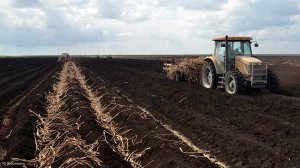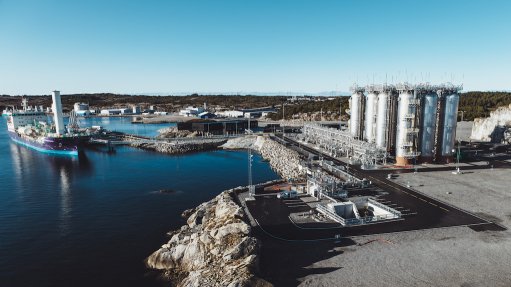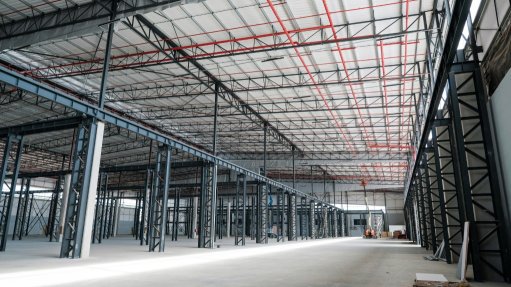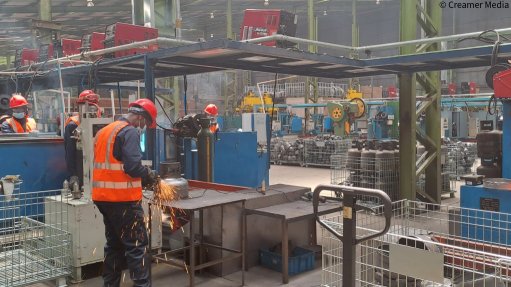Logistics fixes critical for better agricultural outlook up to 2023
Research organisation the Bureau for Food and Agricultural Policy (BFAP) finds in its latest outlook for the agriculture sector over 2023 to 2032 that the sector is experiencing mounting pressure and challenges that are hampering the extent to which it can continue contributing to gross domestic product (GDP).
Speaking during the launch of the latest outlook, the ‘BFAP Baseline 2023’, commodity senior analyst and director Mmatlou Kalaba said recent global events, outbreaks of diseases, severe droughts and financial crises last seen in the 1930s were creating uncertainty about what could happen in the next decade.
“We are not looking at the future for agriculture the same way we did just two years ago,” Kalaba added.
BFAP MD Ferdi Meyer said the South African agriculture sector currently functioned within the context of a growing nation that needed to be fed, coupled with having the most unequal society in the world and extreme weather events becoming more frequent.
The BFAP states in the outlook that although agriculture has contributed strongly to GDP over many years, this contribution will largely stagnate in the years up to 2032.
Looking at the global context, University of Missouri-Columbia Food and Agricultural Policy Research Institute international programmes director Julian Binfield said fertiliser prices had come down globally, but other input costs remained high.
High input costs, coupled with disease and weather issues, have constrained production responses for meat globally, for example. This has led to record or close to record meat prices in the US and the European Union.
Another global trend is extreme weather events happening more often, as well as more use of export controls, supply chain issues and labour availability issues.
Binfield explained further that tariff barriers had fallen in recent decades as multilateral, then bilateral, agreements reduced tariffs.
However, non-tariff barriers have become more important, with pressure for new regulations increasing in domestic markets.
Covid-19 has amplified calls for self-sufficiency and domestic security and trade disputes are likely to continue.
There are more volatile markets as a result, and there will be a trend towards more deals, rather than free trade agreements, as well as more ad-hoc trade restrictions.
BFAP markets and foresight director Tracy Davids listed the realities influencing the latest Baseline outlook as being ongoing economic pressure with ample downside risk.
Davids elaborated that tighter monetary policy globally was weighing on growth prospects, while inflation was sensitive to further shocks despite it slowing. She said China’s economic recovery following new bouts of Covid-19 outbreaks last year remained slow, with real estate problems, in particular, remaining unsolved.
This while structural challenges of energy insecurity and dampened consumer spending prevail in South Africa.
This year had been particularly uncertain, Davids pointed out, with the ongoing war in Ukraine exacerbating that uncertainty, particularly pertaining to the medium term productive capacity in Ukraine.
She agreed with Binfield that more countries were looking inward to grow capacity, which increased the prevalence of non-tariff barriers to trade.
Naturally, weather conditions continue to bring volatility to the global agriculture market, especially since a strong El Nino is expected in the 2023/24 season that impacts differently around the world. In South Africa, this weather event tends to result in drier conditions.
Davids agreed with Binfield that extreme weather events were becoming more frequent.
She highlighted that the agricultural performance of South Africa was coming under increasing pressure owing to price pressures, market access, logistics challenges, weak domestic demand and biosecurity challenges, among others.
In terms of industries that were struggling the most, she listed deciduous fruit, citrus fruit and ‘other horticulture’ as those with a less-than-ideal outlook for productivity up to 2032.
Davids also explained that although world food prices had come down considerably, it had been offset by exchange rate dynamics to some extent in South Africa.
This while urbanisation and population growth is influencing consumption patterns.
She added that almost 70% of South Africa’s population is now in urban areas and that population growth averaged 9% over the last year.
LIVESTOCK
Producers have been under extreme cost pressure, owing to feed costs being persistently higher and the impacts of loadshedding.
Exports will be critical for livestock growth since domestic consumers will remain under pressure for some time.
To this end, Davids said animal health remained a challenge and solving biosecurity problems was critical to enabling export market access. Equally, maintenance and expansion of export market access to prioritised regions remained critical to accelerate growth.
Chicken production will be slower in the short term, in particular, owing to the high-cost environment.
Notably, chicken imports will stabilise at around 385 000 t by 2032, accounting for a smaller share of total consumption.
Beef exports have stagnated while domestic demand is weak.
Davids elaborated that there had been a focus on beef herd rebuilding in the country, however, slaughter volumes were yet to increase.
Herds have expanded and additional production will enter the market between 2023 and 2025. The Comprehensive Red Meat Strategy involves export growth, which BFAP predicts will increase from 6% of production being exported currently to 25% of production being exported by 2032.
Foot and mouth disease is impacting on the trade potential with certain partners, including China, and Davids recommended a focus on broadened access to a number of different markets was needed.
Challenges in the pork sector had also impacted on export numbers and profitability. Rapid production growth globally pushed prices down in 2022. Profitability ratios have improved somewhat, but productivity and value chain efficiency remain key to sustainability of investments made.
“We did see a significant increase in consumption of pork owing to the low prices, however, which is positive,” Davids added.
FIELD CROPS
South Africa is a net exporter of most field crops, barring wheat, which implies that declining world prices will spill directly into the local market.
Strong profits generated over the past three years have enabled investment in technology that optimises productivity.
What the industry did need, however, Davids explained, was efficient registration of new products to enable producers to adopt top technologies, as well as better port capacities and efficiencies, as export volumes grew.
Margins will be declining in the short term as field crop prices decline, however, input prices of insecticides and herbicides are also coming down.
Although area consolidation is expected for most crops in the period to 2032, owing to the price declines, significant yield growth is expected over the outlook period, with robust yield growth expected for oilseeds to replace import products, particularly soybeans and canola.
Surplus maize and oilseeds will support the competitiveness of the livestock sectors.
One less positive outlook is that for sugar cane, the area of which has been contracting for multiple years and will continue to do so. This has been offset by yield and efficiency gains, however, owing to industry efforts.
Sugar demand is set to remain weak, partly owing to policy actions designed to curb sugar demand.
HORTICULTURE
Significant investments in recent years to grow production have resulted in more jobs and more foreign exchange gains.
Prices have been under pressure, however, owing to various factors, leaving investment sustainability at risk.
Davids said inefficiencies of critical infrastructure such as logistics were increasing the risk of failure in the industry, especially for smaller producers and value chain role-players.
While producers are resilient, the value chain will need to increase its efficiency efforts for sustainability of the industry.
Davids added that there was significant price pressure in the horticulture sector as well, although it looks better than other sectors towards the latter half of the outlook up to 2032.
Only 3% area expansion is projected from 2022 to 2032, but volumes are increasing all the way, with a 16% increase in volumes projected over the period.
Productivity increases are expected in the citrus and deciduous fruit industries.
Davids pointed out that by 2032 blueberry exports could comprise 79% of volume, while 36% of all stone fruit would likely be exported.
Additionally, the value of citrus exports is expected to increase by 68% and wine exports value by 67% by 2032, therefore, government and private sector should work earnestly to remedy issues in the rail, ports and roads sector.
Article Enquiry
Email Article
Save Article
To advertise email advertising@creamermedia.co.za or click here
Comments
Press Office
Announcements
What's On
Subscribe to improve your user experience...
Option 1 (equivalent of R125 a month):
Receive a weekly copy of Creamer Media's Engineering News & Mining Weekly magazine
(print copy for those in South Africa and e-magazine for those outside of South Africa)
Receive daily email newsletters
Access to full search results
Access archive of magazine back copies
Access to Projects in Progress
Access to ONE Research Report of your choice in PDF format
Option 2 (equivalent of R375 a month):
All benefits from Option 1
PLUS
Access to Creamer Media's Research Channel Africa for ALL Research Reports, in PDF format, on various industrial and mining sectors
including Electricity; Water; Energy Transition; Hydrogen; Roads, Rail and Ports; Coal; Gold; Platinum; Battery Metals; etc.
Already a subscriber?
Forgotten your password?
Receive weekly copy of Creamer Media's Engineering News & Mining Weekly magazine (print copy for those in South Africa and e-magazine for those outside of South Africa)
➕
Recieve daily email newsletters
➕
Access to full search results
➕
Access archive of magazine back copies
➕
Access to Projects in Progress
➕
Access to ONE Research Report of your choice in PDF format
RESEARCH CHANNEL AFRICA
R4500 (equivalent of R375 a month)
SUBSCRIBEAll benefits from Option 1
➕
Access to Creamer Media's Research Channel Africa for ALL Research Reports on various industrial and mining sectors, in PDF format, including on:
Electricity
➕
Water
➕
Energy Transition
➕
Hydrogen
➕
Roads, Rail and Ports
➕
Coal
➕
Gold
➕
Platinum
➕
Battery Metals
➕
etc.
Receive all benefits from Option 1 or Option 2 delivered to numerous people at your company
➕
Multiple User names and Passwords for simultaneous log-ins
➕
Intranet integration access to all in your organisation





















